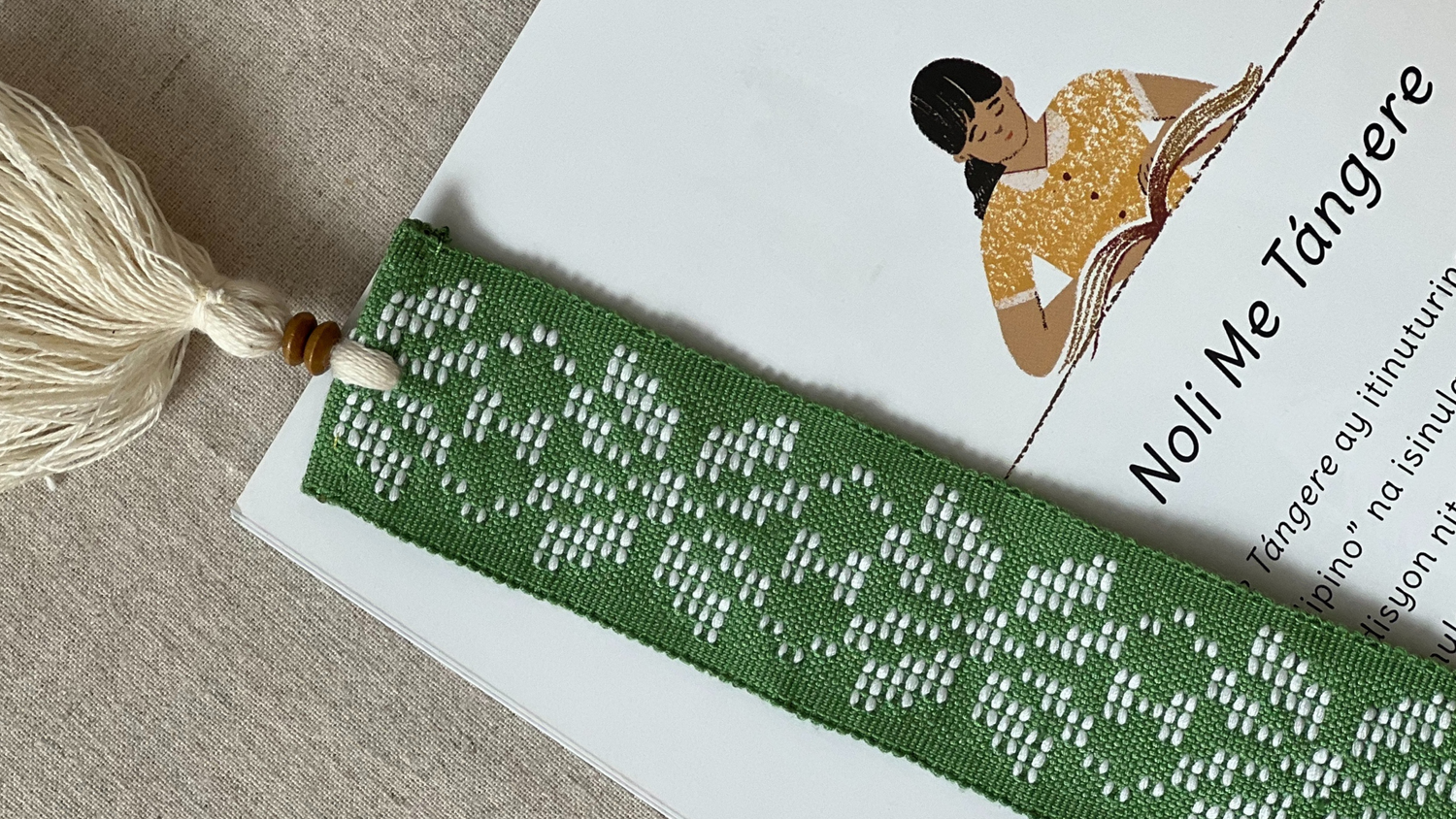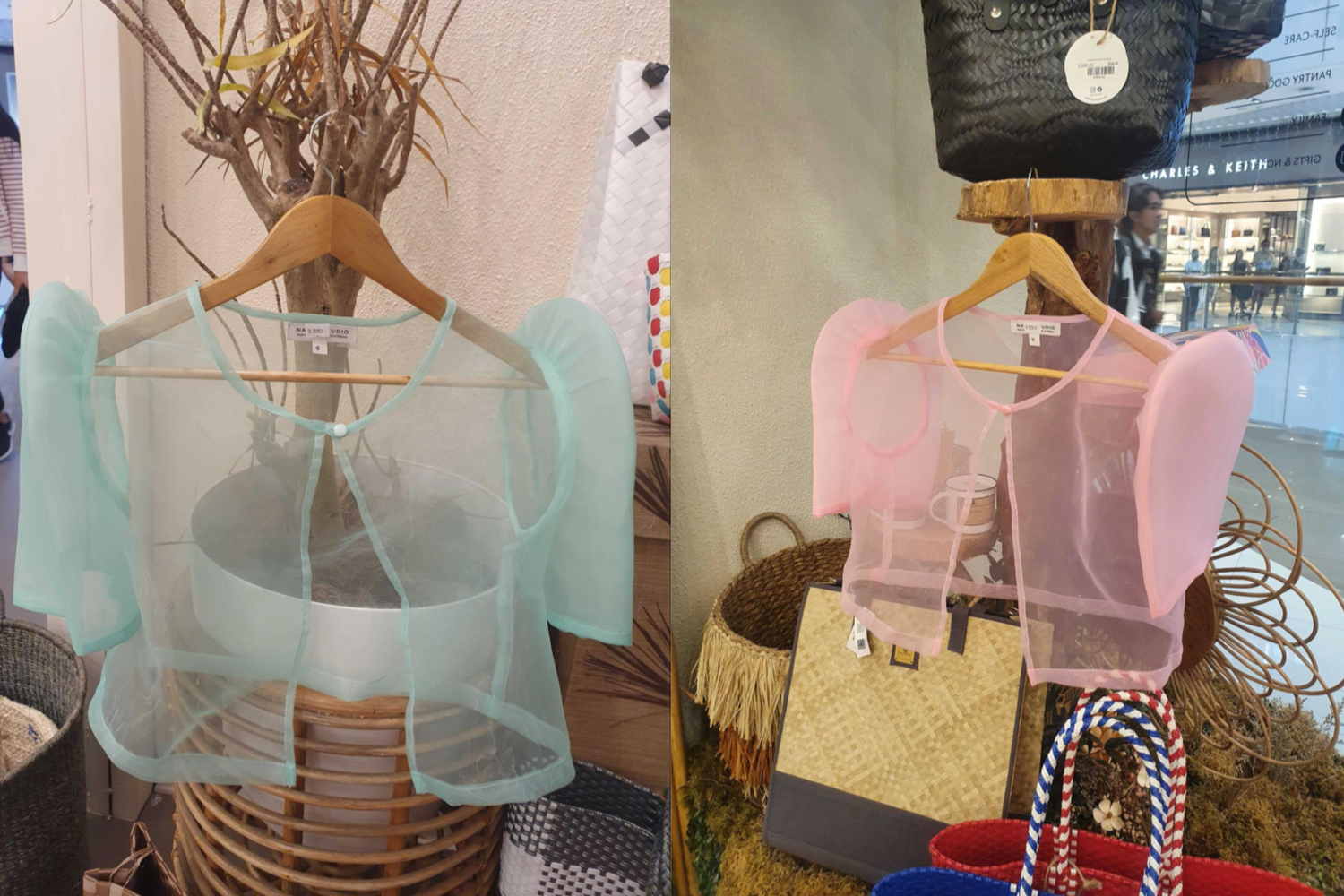The introduction of pineapples to the Philippines in the 16th century planted the seeds for the beautiful craft of piña weaving to emerge. The locals, who had long been using plant fibers to form fabric, adopted the new crop with open arms, and thus the long and rich history of piña weaving began.
Centered in Aklan, in the Western Visayas, piña weaving experienced its height of popularity in the 18th and 19th centuries when it was worn by European aristocracy and even royalty. At this time, the beautifully-embroidered sheer piña fabric was a well-loved and desired luxury on the global and domestic stage alike.

Part of the respect piña weaving holds is due to the time-intensive process required to make it, which has remained largely unchanged since its beginnings. The labor-intensive process begins with the fruit, a pineapple of the breed known as Red Spanish, which grows most abundantly in the region of Kalibo as well as Puerto Princesa on Palawan. After harvesting the leaves—which can grow to over a yard long—piña makers scrape to reveal the fibers using a broken piece of porcelain. In time, they switch to a softer coconut shell; lastly, they wash the fibers in water.
Each fiber is then hand-knotted and formed into a continuous line (an extremely laborious process known as panug-ot) to be handwoven. The fibers are very fine and fragile, and demand a patient and skilled hand. The finest fibers of the pineapple, or liniwan, are then warped using pegs on a board and spun (pag-talinyas) to make the material ready for the loom. Although tedious, the delicate fibers, when finally woven together, have a beautiful shimmering effect. The final fabric appears translucent and fine yet remains stiff, creating the unique piña look, complete with beautifully intricate embroidered designs.
Perhaps unsurprisingly, the original techniques of piña weaving were similar to those of native weaving, such as weaving using similarly-textured abacá fiber. In fact, when considering piña’s source—the pineapple—to its current-day characteristics, the Filipino textile tradition holds a unique blend of influences that make it what it is. Pineapples originated most likely from Brazil and were introduced to the Philippines by the Spanish; Filipinos applied their well-established process to this new medium. Finally, the Chinese introduced the frame loom in the 18th century which affected the weaving process.
Piña pieces, while of course functional, are also works of art. A wide variety of designs decorate the sheer fabric, often getting quite elaborate; it’s easy to imagine the careful hands which make them. Filipinos had access to imported silk and cotton during the Spanish colonial period, but the piña fabric's qualities better lent itself to the intricate embroidery. Filipina women became very skilled in stitching, and piña flourished; the designs became more intricate than many of the finest laces in Europe. These designs included florals, figures, and more basic patterns. Generally, more intricate designs led to a more valuable piece and were often worn to signify one's wealth, as these pieces were extremely expensive. During its golden age, when significant amounts of it were exported to Europe, the designs catered to that upper-class aristocratic audience. A few centuries after the pineapple made its humble debut in the Philippines, the art of piña was revered around the world.

Bertha, or deep collar, of embroidered piña cloth. Philippine, 1890s. Brooklyn Museum Costume Collection at The Metropolitan Museum of Art, Gift of the Brooklyn Museum, 2009; Gift of Mr. and Mrs. Maxime L. Hermanos, 1961
Excerpt from PieceWork Magazine
A particularly fascinating element of piña's history is how it transformed from a Filipino textile craft to a highly-sought-over luxury export to Europeans. This can partially be distilled down to Europe's long-time adoration of the pineapple as a fruit and symbol of wealth and fascinating distant lands. Piña pieces also happened to fit into some of the European fashion tastes of the time.
Within the Philippines, piña weaving was used to make traditional clothing for the upper class. Its light and airy qualities lend themselves to the hot tropical climate of the nation. During its heyday in the 18th and 19th centuries, Filipinas of all classes of society wanted to wear beautiful piña sets. These ensembles were known as María Clara dresses, a name derived from the female lead in Noli Me Tángere, an 1887 novel by Filipino author José Rizal. Just a few decades before, in 1857, the British Consul Nicholas Loney had visited the country and noticed that most families owned a loom in Iloilo, in the Southeast region of the island of Panay.
Piña weaving has been around for a long time and, like most things, has had its ebbs and flows in popularity. While piña has always been present in the Philippines, it experienced a decline in the early 20th century. People favored more affordable textiles, and the in-vogue fashion—as it always does—evolved to accommodate different tastes. The downswing in the prevalence of piña is also due to the devastating Second World War. Before the war broke out, the majority of Filipino middle-class households had a loom. After the war, this wasn't the case; the time-intensive process took a backseat.

However, it has managed to persevere its way into the contemporary world, and its elaborate nature continues to demand respect. Interestingly, in the past few decades, it has seen a resurgence. Like at its origin, piña weaving is still used to create traditional formal wear in the Philippines, the barong tagalog for men and baro't saya for women. The baro't saya consists of a blouse (baro), a kerchief (pañuelo), a long skirt (saya), and a rectangular cloth over the skirt (tapis). It has many variations (collectively known as Filipiniana), including the above-mentioned María Clara dresses. Within the Philippines, it is also used for household items such as table linens and mats, as well as accessories such as bags.
With its unique characteristics and natural beauty, piña weaving continues to endure the test of time. In fact, in 2018, the National Commission for Culture and the Arts in the Philippines started the process of nominating Kalibo piña weaving in the UNESCO Intangible Cultural Heritage Lists to solidify its legacy on paper. This Filipino textile, with its distinct breezy yet intricate look, continues to hold respect both in Filipino culture as well as textile arts around the world.

—
https://www.atlasobscura.com/articles/cloth-made-from-pineapples
https://www.sfomuseum.org/exhibitions/pineapple-pina-philippine-textile
https://pieceworkmagazine.com/embroidered-pina-fabric-from-the-philippines/





